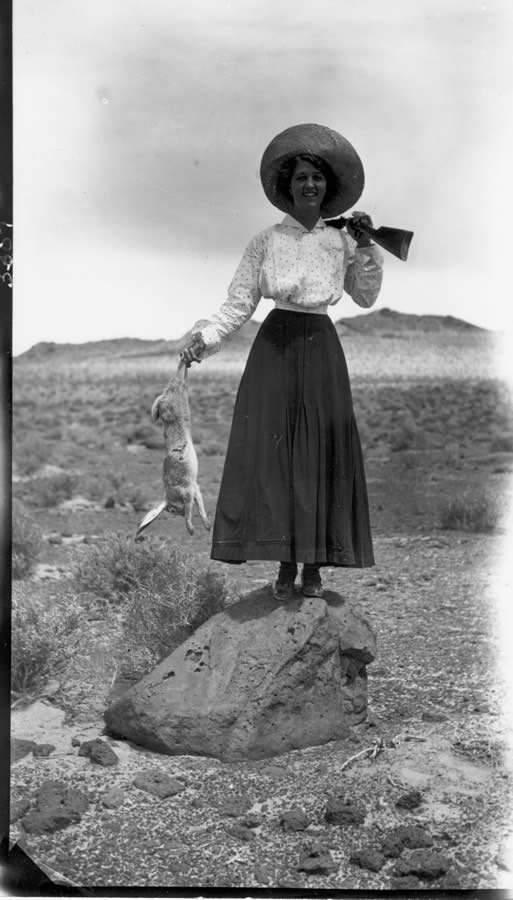edible traditions
DOWN THE RABBIT HOLE
Tracing the animal’s presence in Northern Nevada.
WRITTEN BY JEN A. HUNTLEY
PHOTO COURTESY OF UNIVERSITY OF NEVADA, RENO SPECIAL COLLECTIONS DEPARTMENT
“Silly rabbit, Trix are for kids!”
“Eh, what’s up, doc?”
“Whatever you do, don’t throw me in that briar patch!”
Across the ages, rabbit characters show up in legends, cartoons, and advertisements as goofy tricksters or minor heroes in our childhood storylines.
Ubiquitous in Nevada’s basin and rangelands, rabbits also show up wild on our roadsides, as pets in backyard hutches, pests in our gardens and, increasingly and once again, in stewpots and roasting pans. Rabbit stew is making a comeback, but these long-eared residents have a long history of providing nutrition and insulation to Nevadans.
Nevada’s hare species tend toward dramatic cycles of population booms and busts. In the “boom” years, scientists have counted as many as 1,500 rabbits per square kilometer. Western rabbit populations can decline as much as 90 percent from epidemics of tularemia (rabbit fever).
When the rabbit population was high, Paiute women made nets 2- or 3-feet high and as long as 100 yards. Under the guidance of a rabbit boss, hunters drove the rabbits into the net, where they were dispatched by the waiting Paiute.
Rabbits were prized for their fur almost more than their meat. Nevada Paiutes wore skin moccasins and woven rabbit-skin robes in winter. To make these, the men cut each rabbit skin, spiral fashion, into one long strip, which they twisted so that fur stuck out on all sides. The strips were twined with a fiber thread into a blanket or robe. Such robes were light yet warm.
Euro-American immigrants brought traditional recipes for rabbits into Nevada, but farmers tended to see the animals as pests more than as a benefit. Exacerbating the wild population cycles, farmers and ranchers also killed off the rabbit’s main predator, the coyote, leading to even more dramatic boom populations.
In the 19th and 20th centuries, Nevada communities organized rabbit-killing drives solely for population control, selling the meat and pelts as far away as San Francisco. Coyote hunts continue to this day — Nevada sets no limit on the number of coyotes a hunter can kill — though this practice is becoming increasingly controversial.
Jen A. Huntley is professor of humanities at Truckee Meadows Community College in Reno, and author of The Making of Yosemite: James Mason Hutchings and the Origin of America’s Most Popular National Park.
Resources
Hares of Nevada
http://www.Onlinenevada.org/hares_of_nevada
Paiute Indian Tribe of Utah


